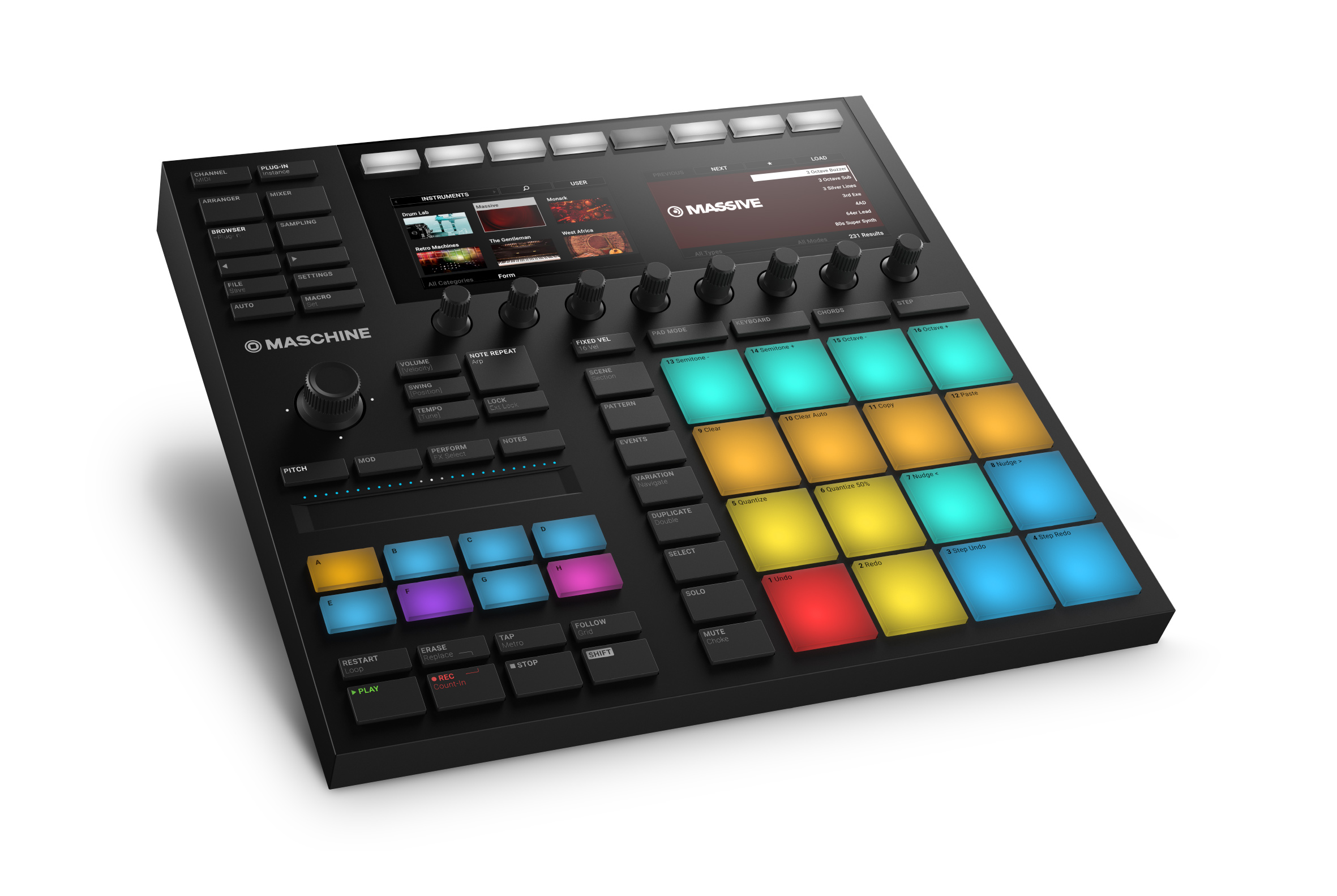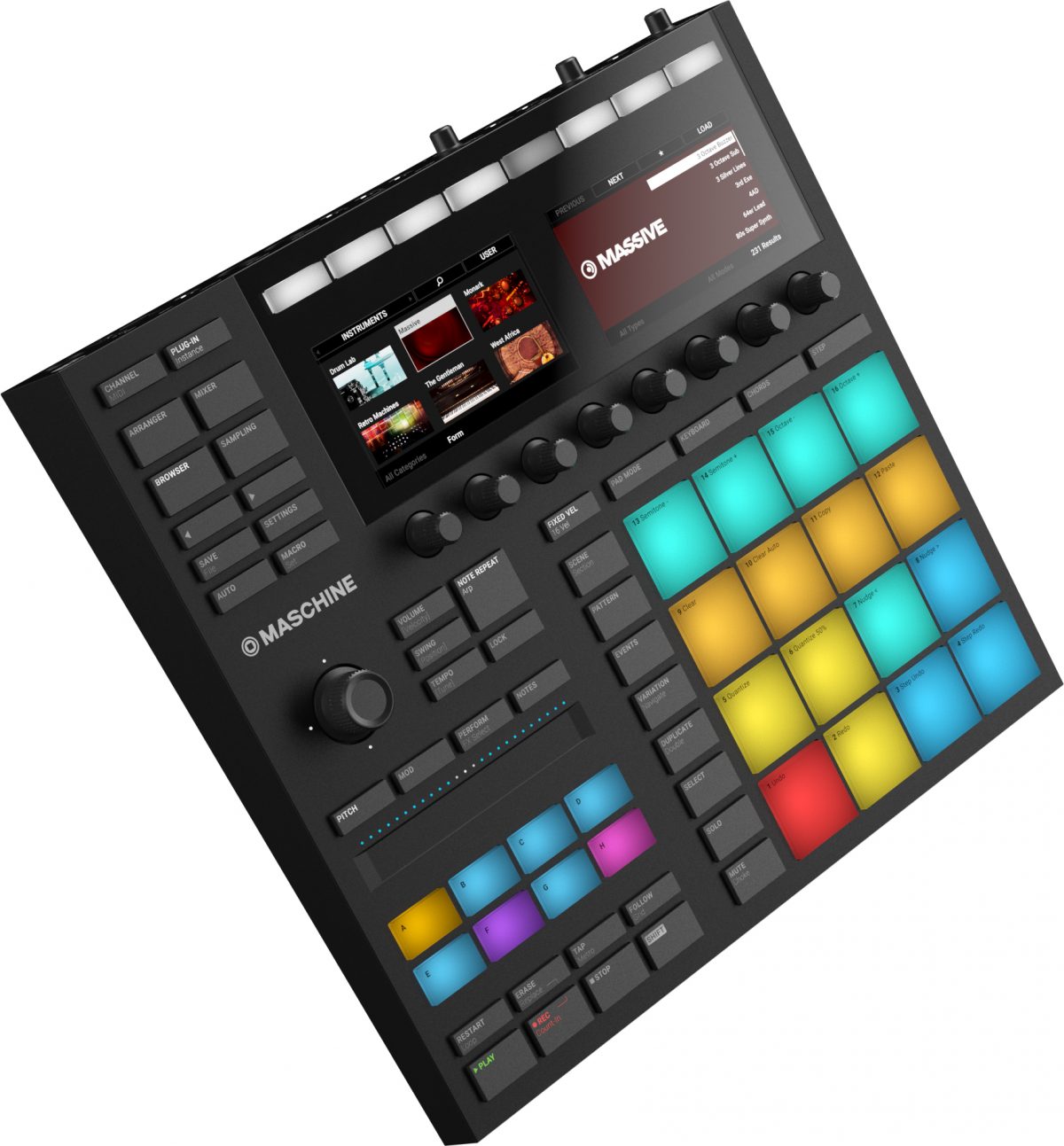Review: Maschine MK3
Native Instruments updates their all-in-one production and live performance tool.

As an all-in-one studio production and live performance tool, Native Instruments’ Maschine line has been one of the most popular in modern music. The company’s latest revision, the Maschine MK3, comes roughly four years after the release of the larger Maschine Studio, and a year after that of the more performance-oriented Maschine Jam. It’s currently available in one size, fitting a host of features from the (larger) Studio and the (smaller) Jam into a portable 12.6″ x 11.85″ x 1.61″ footprint, and further streamlining the Maschine workflow.
How it Looks
The MK3 is a sleek update of the hardware, refining both aesthetics and layout into what feels very much like the best Maschine hardware to date. The most obvious upgrade is the integration of dual screens, which are now proper color LCD displays (the same screens used on the Maschine Studio), allowing for much better browsing, sequencing, and sound-shaping, further removing the need to look back at the computer screen between edits.

Even more significant for some is the fact that the MK3 also functions as a 24-bit/96 kHz audio interface with stereo line inputs and outputs, as well as a mic input and headphone output (it also maintains MIDI I/O jacks). The Maschine pads are slightly bigger than those found in previous versions, and feel more responsive across their surface (something of particular note for finger drummers). There’s a touch strip, the primary use of which is for performative actions (as seen on the Jam), like sound and effect modulation, and even “strumming” played sounds.
The layout has changed in a number of ways, with the addition of dedicated buttons for the different play modes (Pad / Keyboard / Chord / Step), as well as several performance-based buttons for the touch strip controls. There’s a dedicated Macro button, as well as touch-sensitivity on the knobs for efficiently adding parameters as macros, as well as a larger encoder knob that now also functions as a button, used for navigating the Maschine menus.
In terms of its industrial design, the MK3 is easily the most solidly-constructed Maschine model so far. The general visual styling, including the matte finish and left-justified text on the buttons, is reminiscent of Ableton’s Push controller; not a bad thing, per se, but worth noting. (The color palette of the LEDs still feels more NI than Ableton, for what it’s worth).

How it Plays
The MK3 feels like a proper follow-up, evolving the Maschine workflow in a handful of key ways. The layout has been refined such that things generally feel more like they’re in the “right” place, and getting around the interface simply feels quicker and more intuitive than ever before. The touch strip serves as a nice alternative to knob-twisting as a way to input automation, and the dedicated Keyboard and Chord buttons make playing keys and chords much more accessible and intuitive than it was in previous iterations. The built-in audio interface is a nice addition, and will mean less clutter on the desk for many producers, and be a boon to those who want one less piece of gear to lug around to live gigs or studios (even if the tiny gain knobs on the back of the unit are a bit ungainly).
Perhaps the most useful new feature on the MK3 is the “Lock” function (which, to be fair, originated in the Maschine Jam). Press it, and you’ll temporarily save a snapshot of the current parameter settings for your project; tweak your sounds and effects to your heart’s content, and then when you’re ready, hit the Lock button again—and everything immediately snaps back to the captured snapshot. What’s great is that you can save up to 64 of these “lock states,” which you can then move between via either immediate or gradual “morphing” transitions. It’s a brilliant workflow improvement and helps open up new creative pathways, and one we’ll likely see copied by other manufacturers in the coming years.
The Bottom Line
While not a revolutionary upheaval, Maschine MK3 feels like a smart, significant evolution of the platform. For those considering an upgrade, the MK3 definitely feels like a worthwhile step up from the MK1 and MK2, while perhaps less so for studio owners who don’t need to save the desk space (or perform live). Choosing between this and Ableton’s Push, however, remains largely a matter of workflow taste: Maschine continues to excel as an all-in-one beat machine and sampler; while Push functions as a more comprehensive, wide-ranging interface for Ableton’s ubiquitous DAW.
Price: $599

